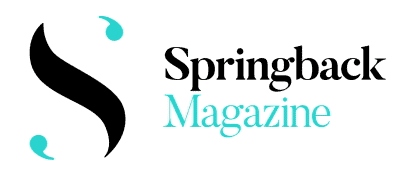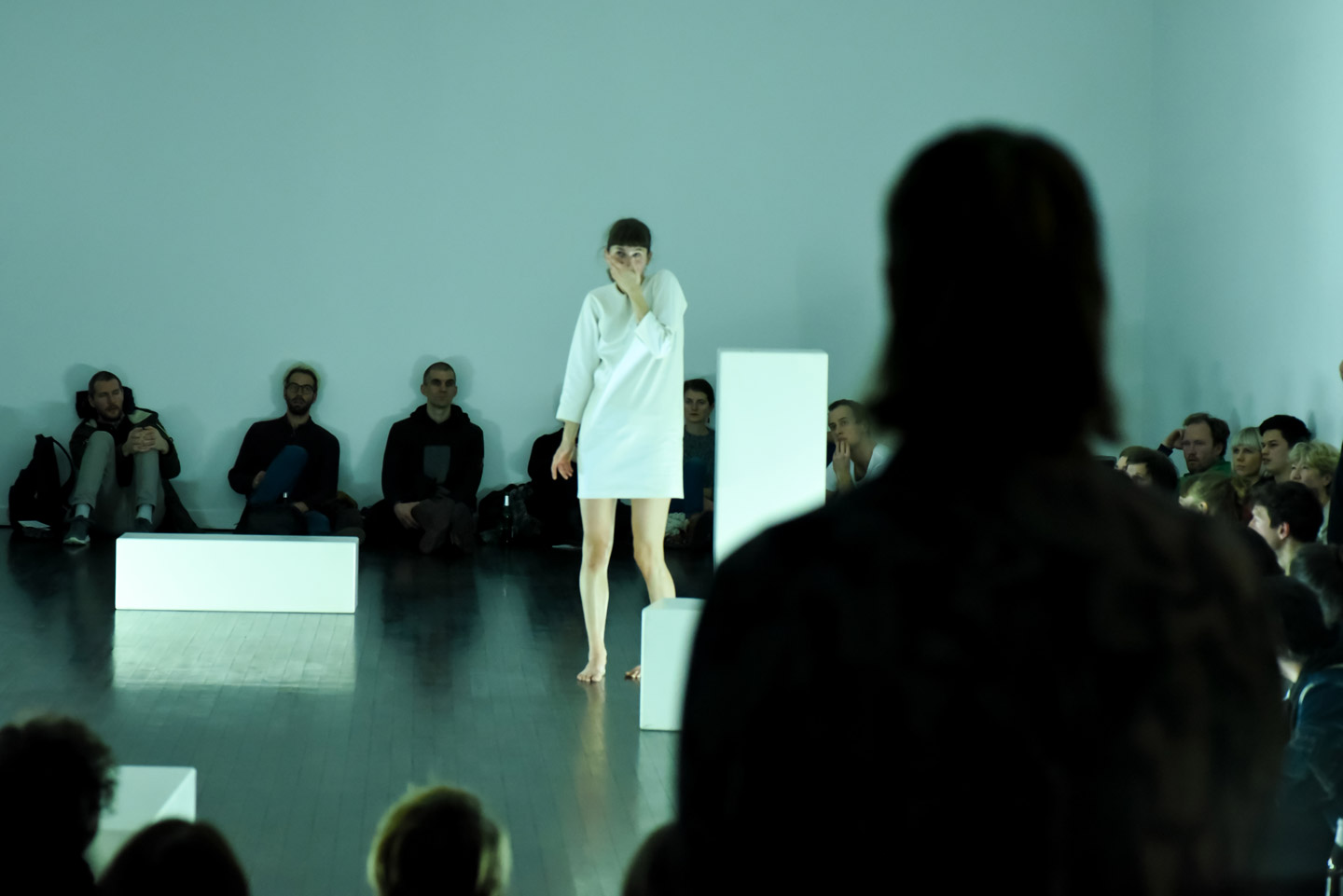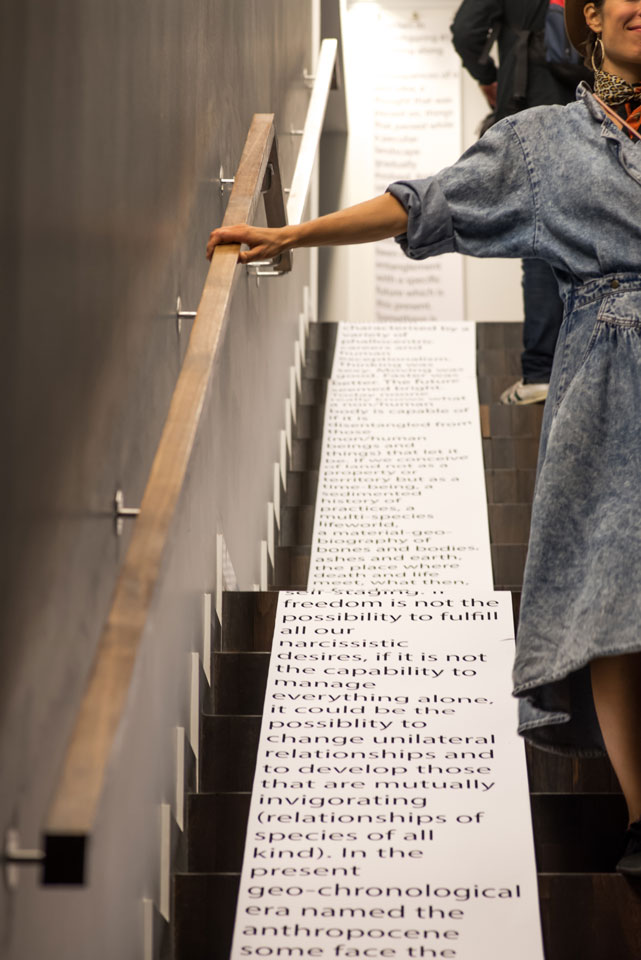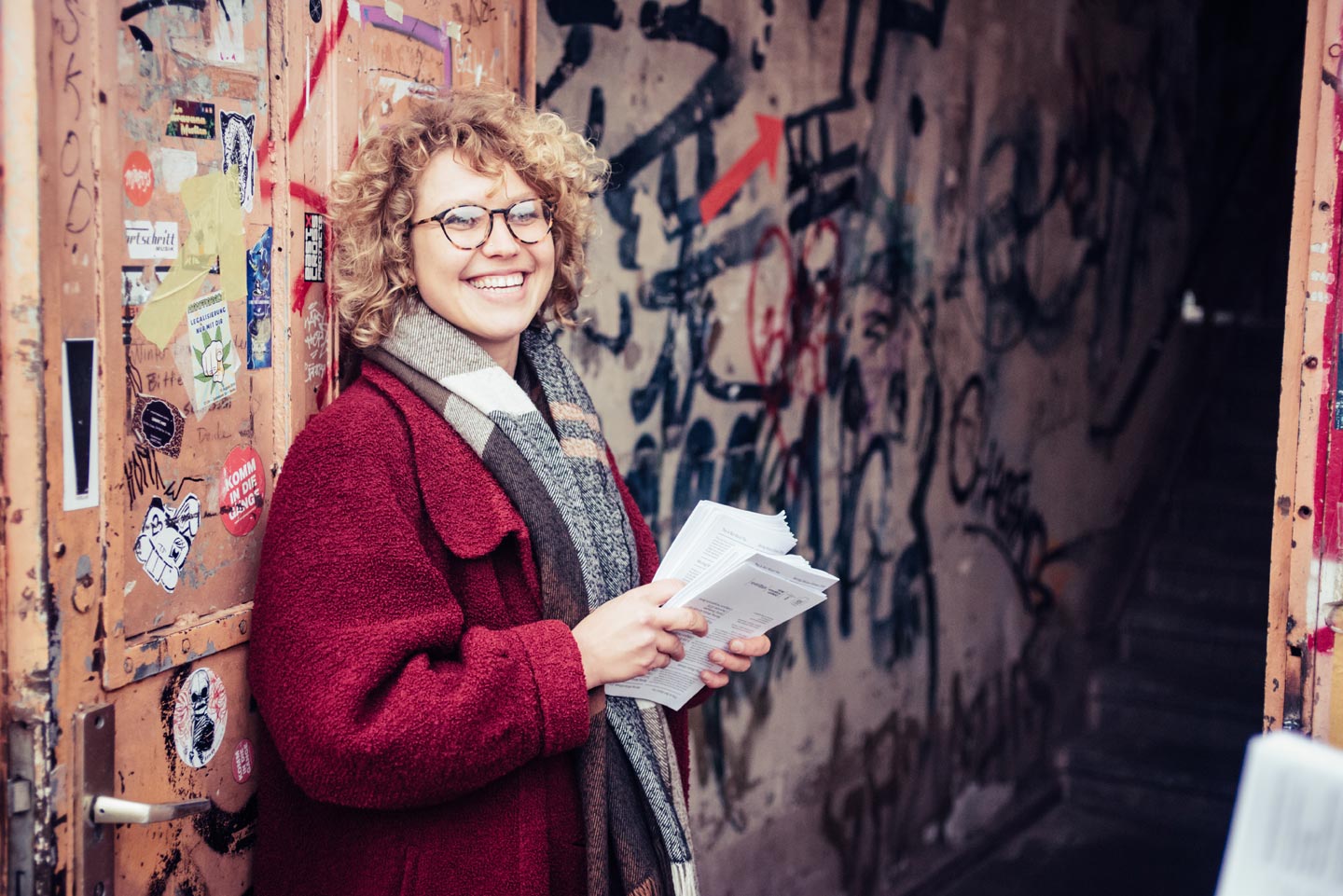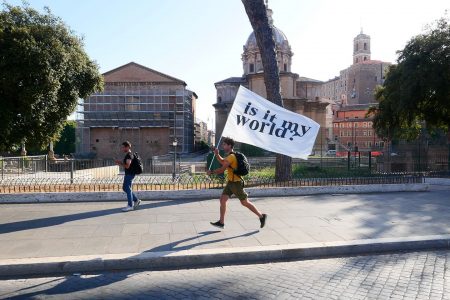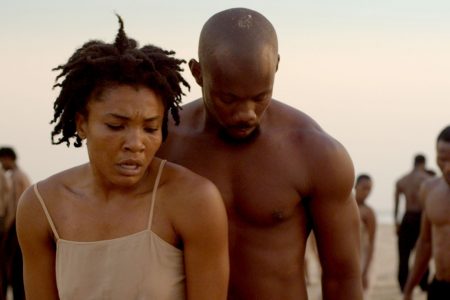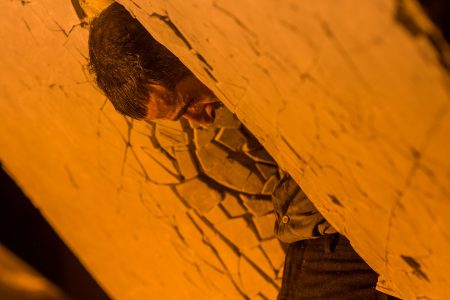Contemporary dance can be presented anywhere: from museums to former factories, from white-wall gallery spaces to graffiti-adorned street corners. Choreographers are also, as well as forging new stages, increasingly inviting audiences to immerse themselves in durational performative installations or take part in one-on-one encounters or interventions. Along with this variety of spaces and formats have come new methods of programming. At this nexus sits Berlin’s Montag Modus, an event series that presents mixed, multimedia performances across multi-storey buildings.
Montag Modus was initiated in 2015 when the Hungarian cultural institute, Collegium Hungaricum Berlin, invited curator Léna Szirmay-Kalos to devise a performance event featuring Berlin-based and Hungarian artists. Four years and 30-odd editions later, the curatorial team has expanded, led since 2019 by the independent collective MMPraxis (Szirmay-Kalos, choreographer Jasna Layes Vinovrški and Budapest-based art historian Dániel Kovács). The 2019 programme, titled ‘Klimata’, explores a broad range of perspectives on climate change with five events across two vastly different locations: the sleekly institutional cultural house of the Collegium Hungaricum Berlin and the rough, concrete artists’ studio complex Am Flutgraben.
Szirmay-Kalos spoke to Springback about working outside the theatre context, the term ‘performance exhibition’ and about plans to bring Montag Modus to Prague and London.
BJ: At Montag Modus you invite dance artists to show a work-in-progress or adapt an existing piece. How does this work?
LSz-K: Usually I approach artists whose work suits the theme of the event. We talk about the programme and the site and how their piece could fit within it – most artists find it an interesting challenge! They are then invited for a one-week mini-residency on site where they adapt their piece to the space. As we don’t have the technical capacities of a fully equipped theatre, we are, rather than ‘simplifying’ the works, more interested in rethinking them in the frame of Montag Modus. This means that with a stage piece, artists might take a notion or a single scene from the work and expand on that. This is what the Hungarian trio Ábris Gryllus, Márton Emil Tóth and Tamara Zsófia Vadas did with their project ‘NIBIRU’: they used their research, which addressed the Anthropocene from the viewpoint of teenage girls, to create a performative installation. The starting point for this ‘environment’ was the same as it was for the original piece, but it became an entirely different work in the process. Other pieces already work well in the space and barely require adaptation or cutting, such as Dragana Bulut’s solo Pass it on, which we presented in its full-length version. Once we know the formats of the night, we, as curators, come up with a schedule and discuss this with the artists. Each event is essentially a co-creation of many.
BJ: What do you pay attention to when you create the programme?
LSz-K: We aim to offer our audience different bodily invitations throughout the night. Rather than staying put, like in the traditional theatre experience, our audience is mobile, as they move between rooms and spaces to visit the performances that overlap or happen simultaneously as they occupy the whole building. Overall, the structure is loose – people are welcome to come in later or leave earlier, and as an audience member you are not necessarily obliged to watch the pieces. This creates a kind of dramaturgy, or multiple dramaturgies of the evening, as audiences get to choose their own route.
BJ: To what extent do you direct this ‘route’?
LSz-K: It depends. We have had evenings where we had a tight schedule, and we had to move the audience swiftly from one space to another, which created a real sense of collective experience. And then there are other events where the audience is hardly ever all gathered in the same room, leading to a more individual experience. Sometimes a piece might have limited spots, meaning that from the outset, it is not possible for everyone to see it. We are always interested in confronting our audience with the fact that they can never see everything – they have to make a choice and accept their decisions.
BJ: So what kind of role does the audience take?
LSz-K: Montag Modus has the energy of an exhibition opening or a première, but it demands a different kind of focus from the audience and the liberal structure results in many in-between moments – between performances, between spaces – where people can talk. It’s a very social event! Also, the works themselves very often invite encounters or create relations among audience members, like in the case of environments or installations: when the audience enters, they become part of the piece.
And interesting relations emerge when people are made to move. For example, for the topic of the Anthropocene, cultural scholar Martina Ruhsam wrote a text which we printed on a 20-metre roll of paper and installed on the staircase. It was very interesting how it activated the audience: to read the poem they had to go backwards down the stairs and try not to bump into one another. This intertwining of art and social life, overlapping on a high energy level, is a core part of Montag Modus.
BJ: Was the text commissioned for the event?
LSz-K: Yes. With this year’s Klimata series, we were interested in inviting a writer or a cultural scholar to contribute to the topic for each event. Most of the texts became very poetic and we thought about how they could be ‘performed’ in line with the theme. For example the text ‘Digital Eschatology’, on the topic of digital climate by philosopher Márió Z. Nemes, was sent to the audience via email.

